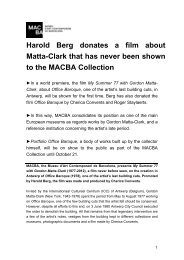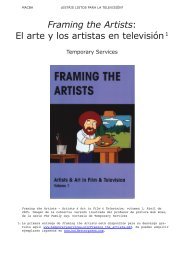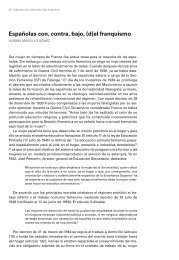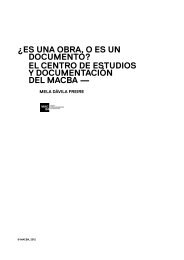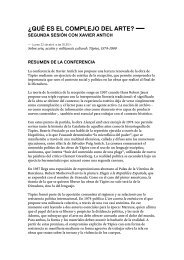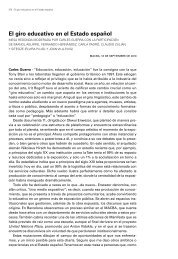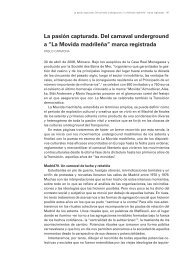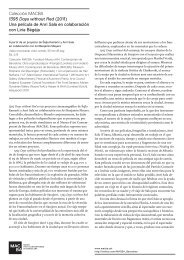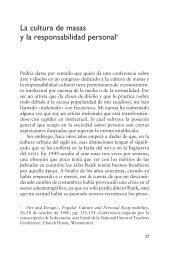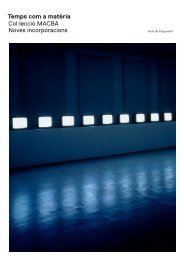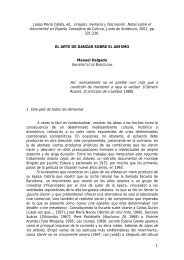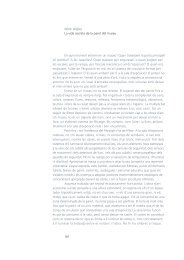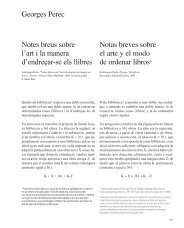Chance, Indeterminacy, Multiplicity - Macba
Chance, Indeterminacy, Multiplicity - Macba
Chance, Indeterminacy, Multiplicity - Macba
You also want an ePaper? Increase the reach of your titles
YUMPU automatically turns print PDFs into web optimized ePapers that Google loves.
53. Deleuze’s first article on Bergson,<br />
“Bergson’s Conception of Difference”<br />
was initially presented as a lecture<br />
in 1954. Gilles Deleuze, “Bergson’s<br />
Conception of Difference,” in John<br />
Mullarkey, (ed.), The New Bergson,<br />
Manchester: Manchester University<br />
Press, 1999, pp. 42–65; lecture date<br />
given in Michael Hardt, Gilles Deleuze:<br />
An Apprenticeship in Philosophy,<br />
Minneapolis: University of Minnesota<br />
Press, 1993, p. 2.<br />
54. Deleuze, Bergsonism, pp. 42–43,<br />
96–98.<br />
indicate a relationship between the composition’s sounds and the<br />
material from which they were drawn that was not one of identity,<br />
but one of difference.<br />
The distinction that Cage will come to make is fundamental, and<br />
in order to describe it we will have to be precise. It is from Deleuze<br />
– whose own study of Bergson began at exactly the same historical<br />
moment as Cage’s – that we will be able to derive the needed analytical<br />
tools. 53 First, we will have to introduce a terminological distinction,<br />
for, as pointed out by Deleuze, there is in Bergson’s thought<br />
an important difference between possibilities and virtualities. 54<br />
Like disorder and non-being, the idea of the possible is for Bergson<br />
a false idea, a projection from reality backward into a supposedly<br />
prior state. Possibilities are considered to be knowable, pre-existing<br />
their realization already endowed with their proper form. There<br />
is, then, no difference between a possible action and a real action<br />
apart from the fact that a real action has come to pass and a merely<br />
possible action has not, or has not yet.<br />
Virtualities, by contrast, are of a different order altogether: they<br />
do not pre-exist their coming into being in an already constituted<br />
form. The virtual exists in a state of potentiality and is, as such,<br />
properly unknowable. Whereas possibilities relate to static, preformed,<br />
closed systems (being, in fact, backward projections from<br />
an existent reality), virtualities are part of ongoing systems, “vital”<br />
and “creative” systems that are infinitely evolving and temporally<br />
accumulating. The virtual, therefore, cannot be fully conceived<br />
until it is created.<br />
In order to describe the manner in which Bergsonian virtualities<br />
come into being, Deleuze provides a second terminological<br />
distinction: whereas possibilities are realized, virtualities are<br />
actualized. Here the distinction is equally fundamental. The<br />
relationship of possibilities to their realization is characterized<br />
by identity and limitation. A possibility that is realized is the<br />
same as it was in its prior state of possibility; it is identical to its<br />
previous state, only it now seemingly has reality added to it.<br />
In relation to the totality of possibilities available at any given<br />
time the one that is realized is derived according to a process<br />
of limitation, having been selected from out of all the others that<br />
are not, or are not yet, realized. Such is the relationship of the<br />
notes in Duchamp’s Erratum Musical to the hatful from which<br />
they were drawn or of the notes in Cage’s Concerto for Prepared<br />
Piano to the charts in which they were found. The role of chance<br />
is limited to that of selecting from amongst the set of possible<br />
223



